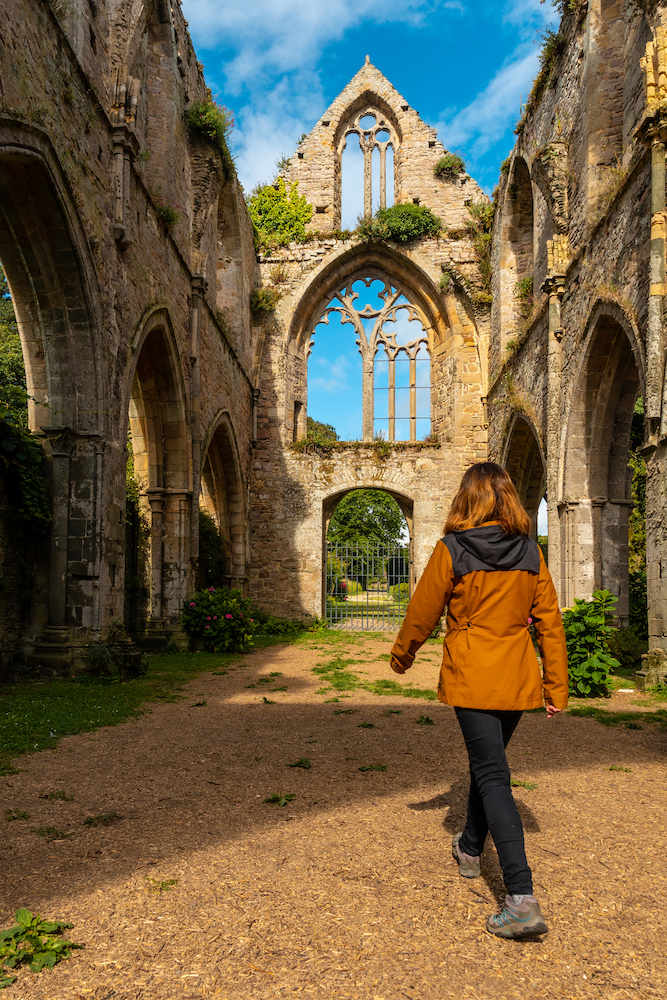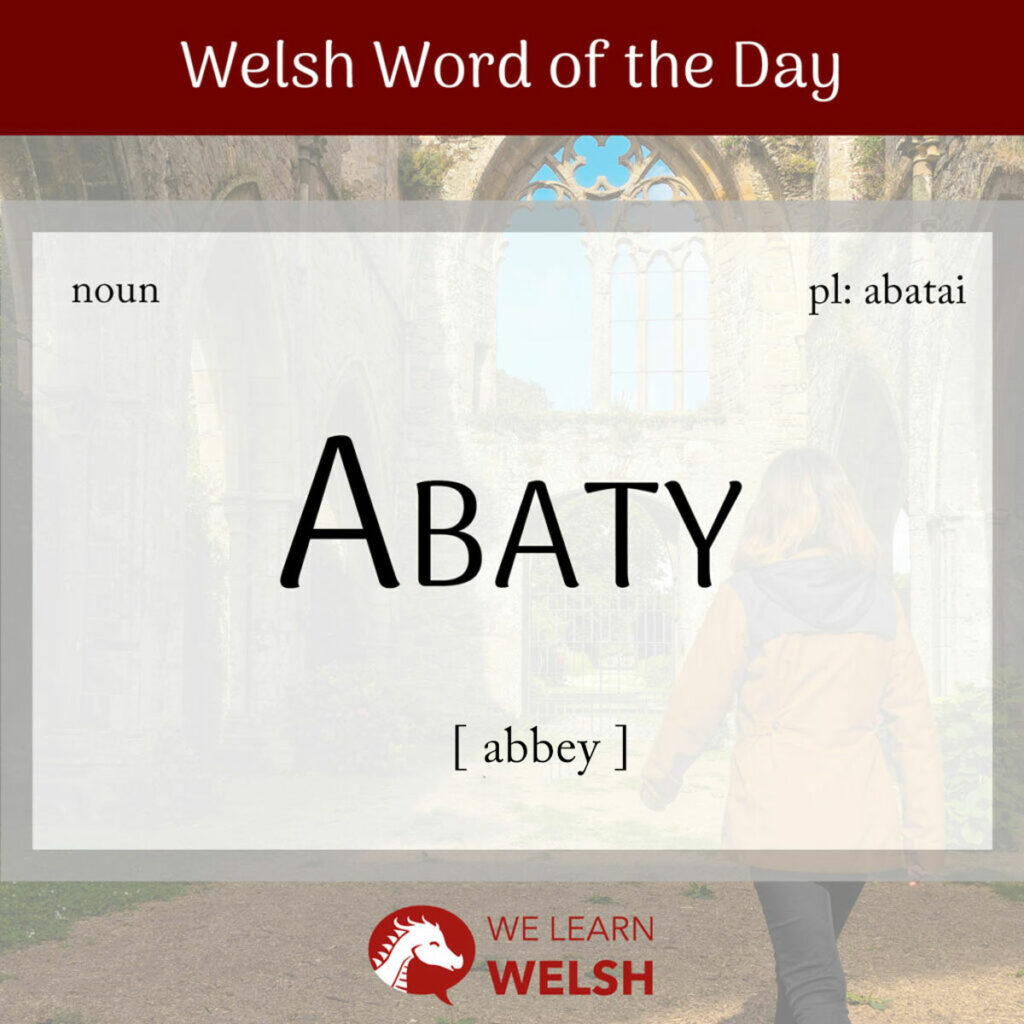Today’s Welsh word may seem a bit of an oddball choice at first, but if you look a little closer, it’s key to the history and geography of Wales. I’m talking about abaty, meaning abbey. The plural form is abatai (abbeys).
abaty
abbey
abatai
abbeys
This plural form may be a bit surprising. It’s because abaty comes from combining abad (abbot) and tŷ (house), so it borrows the irregular plural tai (houses) from tŷ.
Though abaty seems similar to the Latin abbatia, there are two etymological clues which show us that the abad and tŷ combination is a much more likely origin. The first is the way it pluralises. The second is the phonetic history of similar words borrowed from Latin – if we compare to other vocabulary, it suggests that had abbatial been borrowed into Welsh, it would have ended up as something more like abeidi.
However, the existence of abbatia and the derived English abbey probably had some influence on the development of abaty as a word, especially as Lladin (Latin) would have been such an important language in abatai. And abad (abbot) itself does come from the Latin abbas, so it’s not like there’s no relationship at all.
Abaty is a masculine noun. Because it begins with a vowel it never mutates. But it can be affected by h-prosthesis, which basically means that a h is added to the start of this word after ein (our), eu (their) and ei (his / her) when used to mean her. A lot of people ignore this rule, though!
Gweithiodd y mynachod yn galed i ailadeiladu eu habaty ar ôl y tân.
The monks worked hard to rebuild their abbey after the fire.
Though Cymru (Wales) today is a tapestry of diverse kinds of cred (belief) and non-belief, Cristnogaeth (Christianity) has played a particularly important role in its hanes (history).
Mynachlogydd (monasteries), including the especially significant abatai, were centres of dysgu (learning) – places where people could dedicate themselves to studying new ieithoedd (languages) and uncovering ysgrythur (scripture) and even gwyddoniaeth (science). Abadau (abbots) and abadesau (abbesses) were also powerful individuals in gwleidyddiaeth (politics).
And Cymru had its own crefyddol (religious) importance extending beyond its own borders.
Take the example of the cymundod mynachaidd (monastic community) of Tyddewi (House of David) in St David’s, the UK’s smallest dinas (city) named after Wales’ patron saint Dewi Sant (Saint David). It was so widely known and respected in the medieval period that y Pab (Pope) Calixtus II declared that two pererindodau (pilgrimages) to Tyddewi were equivalent to one to Rhufain (Rome).
By the 1100s there were just under twenty priordai (priories) in Wales. Priordai are a kind of mynachlog (monastery) led by a prior (prior) rather than an abad – many were under the control of larger and more powerful abadai that were built during this period.
Particularly influential as a cymundod mynachaidd was Urdd y Sistersaidd (the Cistercian Order). They got on well with local people because they got involved in the local community and even farmed defaid (sheep)!
Many of Cymru’s most beautiful and iconic abadai were damaged by diddymiad y mynachlogydd (the dissolution of the monasteries), but plenty remain in whole or in part. Some have been converted into churches, called eglwysi abadol (abbey churches), and the adfeilion (ruins) of others have become popular tourist destinations, such as Ystrad Fflur (Strata Florida) in Ceredigion.
Aethon ni am dro ger Abaty Cwm Hir penwythnos diwetha.
We went for a walk near Abbeycwmhir last weekend.
There are quite a few towns and villages named after abatai dotted around Cymru, too, like Abbeycwmhir, known for the beautiful walks in the area as well as for the historic abaty. Its name comes from the Welsh abaty cwm hir (long valley abbey).
One site I particularly recommend is Abaty Tyndyrn (Tintern Abbey). It’s famous for appearing in the title of a cerdd (poem) by William Wordsworth, entitled “Lines written a few miles above Tintern Abbey”. Aside from the missing to (roof), its original structure is almost entirely intact, and it’s set in the awe-inspiring Wye Valley.
Whatever your personal religious credau (beliefs), the love and care poured into its pensaernïaeth (architecture) is sure to rouse edmydgedd (admiration) and spiritual reflection.


